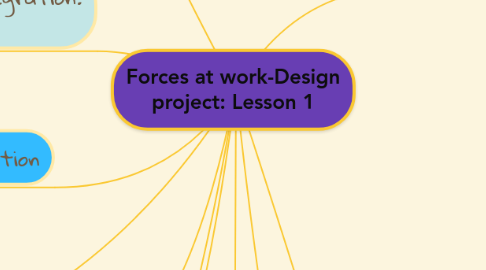
1. Year level: 4
1.1. Year level description: By the end of Year 4 students will have had the opportunity to create designed solutions at least once in the following technologies contexts: Engineering principles and systems; Food and fibre production and Food specialisations; and Materials and technologies specialisations. Students should have opportunities to experience designing and producing products, services and environments
2. Curriculum links
2.1. Design and Technologies
2.1.1. Investigate how forces and the properties of materials affect the behaviour of a product or system (ACTDEK011 - Scootle )
2.1.2. Generate, develop, and communicate design ideas and decisions using appropriate technical terms and graphical representation techniques (ACTDEP015 - Scootle )
2.1.3. Plan a sequence of production steps when making designed solutions individually and collaboratively (ACTDEP018 - Scootle )
2.2. Digital Technologiges
2.2.1. • Plan, create and communicate ideas and information independently and with others, applying agreed ethical and social protocols (ACTDIP013 - Scootle )
2.2.2. • Collect, access and present different types of data using simple software to create information and solve problems (ACTDIP009 - Scootle )
3. Cross-curricular integration: STEM
3.1. Science
3.1.1. Forces can be exerted by one object on another through direct contact or from a distance (ACSSU076 - Scootle )
3.2. Mathematics
3.2.1. Use scaled instruments to measure and compare lengths, masses, capacities and temperatures (ACMMG084 - Scootle )
4. Project description
4.1. To design and build an arcade game out of recyclable materials that shows AT LEAST two different forces in action (push, pull, magnetism, friction, gravity) and meets the criteria of a stable and fun game.
5. Learning Experience plan
5.1. Students prior knowledge
5.2. Assessment
5.2.1. What i will monitor
5.2.2. How i will monitor
5.3. Specific Learning goal
5.4. Lesson objective:
6. Teaching an learning adjustments and considerations
6.1. Organised groups of mixed abilities
6.2. Monitoring groups by initially splitting up students and making them leaders of groups. Students with behaviour difficulties will be moved on the mat if needed Students with disabilities will be assisted further to work within groups and needs for physical disabilities met with assistance
7. General capabilities covered in lesson
7.1. literacy
7.2. critical and creative thinking
7.3. ICT
7.4. Personal and social capability
8. Strategies to promote computational and design thinking
9. Safety and risk management considerations
9.1. Ipad use in the classroom
9.2. Managing work space
9.3. Working collaboratively
9.4. Use of design materials: glue gun and knife/scissors
10. Structure of the lesson
10.1. Introduction
10.1.1. Teaching strategies
10.1.1.1. Hook: Students on the mat, show them Cain’s arcade video on IWB to hook them into the project. Think pair share with mini-whiteboards what they noticed about the arcade games that Cain produced and what forces they saw in action. Whole class mind map creation (on IWB) of different forces, materials, games and other aspects they noticed in the video-focus on science principals and design aspects
10.1.2. Focus questions
10.1.2.1. What materials has Cain used? How has he used them and what can you see them representing in a real arcade?
10.2. Body
10.2.1. Teaching strategies
10.2.1.1. Organise students into groups (group leaders nominated then names out of a hat). Hand out project packs (1 per students for science folder) and introduce the task: To design and build an arcade game out of recyclable materials that shows AT LEAST two different forces in action (push, pull, magnetism, friction, gravity) and meets the criteria of a stable and fun game. Whole class discussion: Introduce the project packs, Edublogs and marking criteria that students will be assessed on Refer student’s attention to the marshmallow shooters we made back in science. Ask students to label a diagram showing the different force that made this shooter work and explain how it was designed and built in 3 sentences.**Use this for diagnostic assessment on design knowledge and force knowledge** Model how to complete the first two pages (brainstorm and pre-planning) based on the marshmallow shooters the class built in Science last week. Allow time for students to brainstorm ideas with their group, monitoring ideas and giving suggestions
10.2.2. Focus questions
10.2.2.1. What are some aspects of group work we need to consider? Explain to me why planning is important in design work? Why do we need to pre-plan? What will your game look like? How will your game be put together?
10.3. Conclusion
10.3.1. Teaching strategies
10.3.1.1. Bring students to the mat to record the types of materials they may like to work with on our class resource list (that will stay up in the room) so we can start sourcing them as a class Post on Googledox communication page so parents can see the resources needed to start collecting.
10.3.2. Focus questions
10.3.2.1. What materials will you need to build your game? What is a recyclable material? Explain why you chose these materials to build your design
